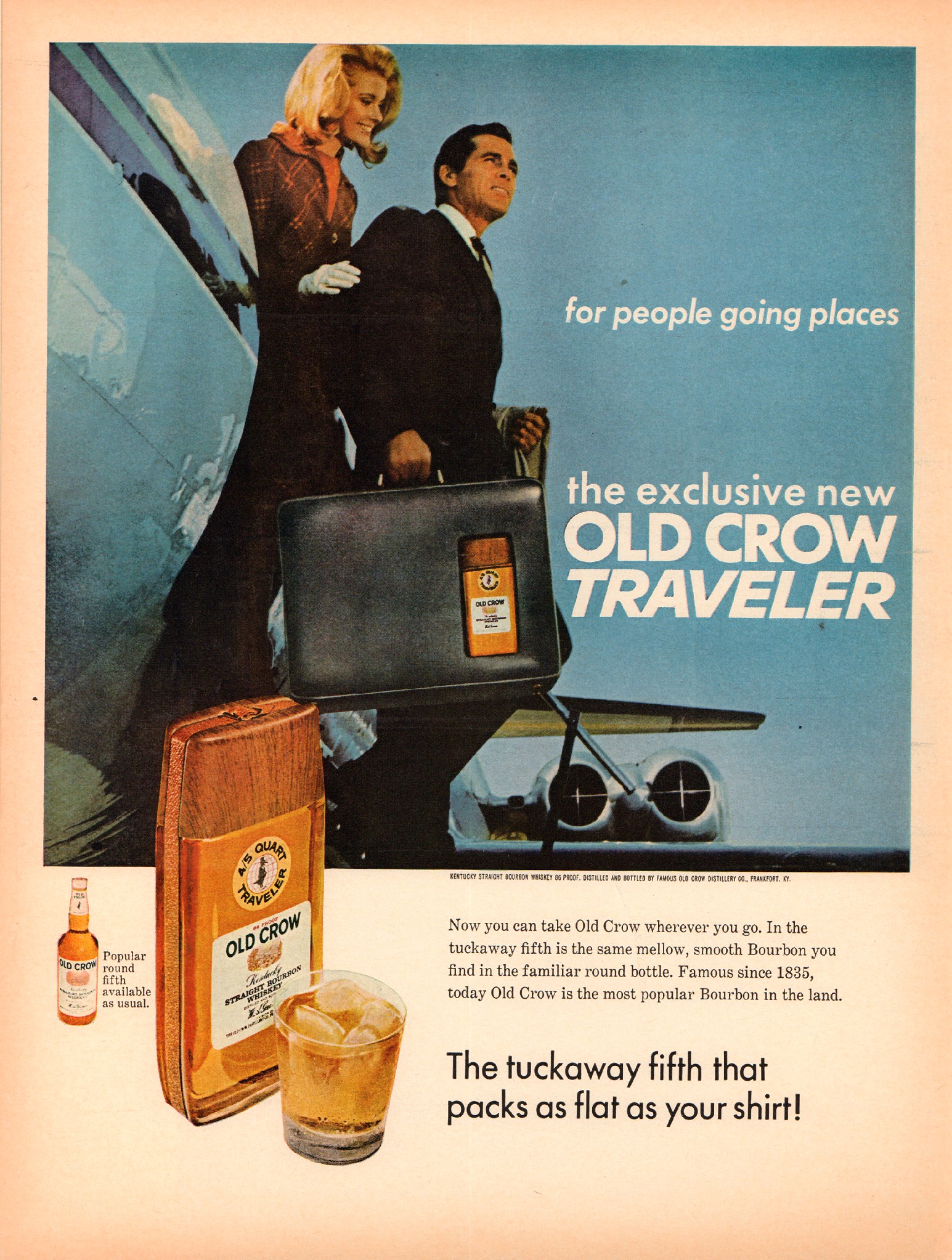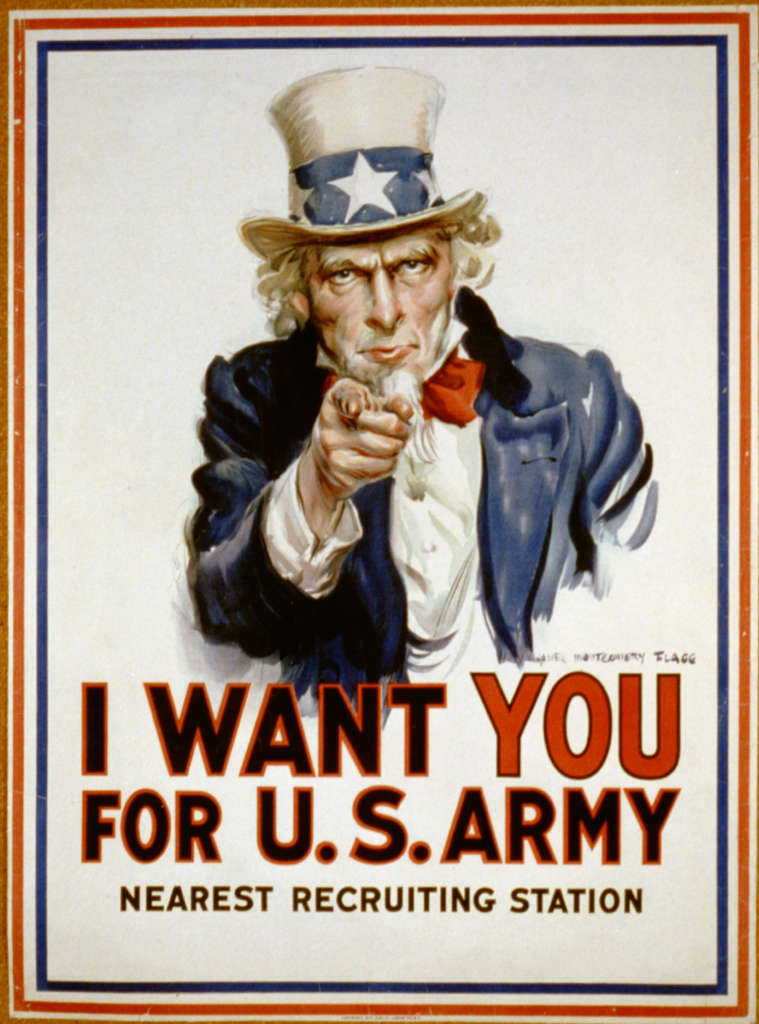In the second of a series of posts about ethics and design, I highlight the relationship between advertising and designing behavior.
“Make it simple but significant,” says ad exec and creative mastermind Don Draper in the hit show, Madmen, about advertising in the 1960s. However, “make it simple but significant” could as easily be used as a mantra for designers. In fact, some of the most efficient, effective, and devastating designs are advertisements:
“Make it simple but significant” – Just do it.
“Make it simple but significant” – Diamonds are forever.
“Make it simple but significant” – Where’s the beef?
Advertisers Disrupt, Designers Blend In
Advertisers primarily seek to impact consumer behavior by disrupting it. They use artifacts like pictures in a magazine or the design of a bottle to capture attention, link emotions to a product, or create desire. The Old Crow whiskey ad below shows a broad-jawed beau with a bright-eyed blonde belle disembarking from a private plane. Pretty slick, right? It must have been the Old Crow.

Yet, the relationship between advertisers and design is complex. Typically, designers are more focused on the Process of design than advertisers. For example, there is more emphasis on the process of design thinking. There are, of course, countless exceptions of advertisers who focus on the process (e.g., Cambridge Analytica gathering information about people before targeting ads). These broad statements only apply generally.
For designers, good designs often blend in. Good designs feel natural. Good designs improve life by ridding pain points, making things easier, and being intuitive. “Good design is actually a lot harder to notice than poor design, in part because good designs fit our needs so well that the design is invisible,” says the Godfather of human-centered design, Don Norman. (See more about him in this article).
Advertising uses some of the same principles as designers (e.g., “make it simple but significant”), except they seek to disrupt and reroute behavior. Many of the skills and processes are the same. However, this key difference, to disrupt and reroute, drives very different end results.
Marilyn Manson, the self-proclaimed “Antichrist Superstar,”1 explained this ‘disrupt and reroute’ strategy in darker terms (of course), “Cut to the commercial, buy the Acura, buy the Colgate, if you have bad breath they’re not going to talk to you… It’s just this campaign of fear, and consumption.”2 In his words, advertisers plant emotions (fear) in viewers to change behavior consumption.
Disrupting with Humor (or “The Day KFC Ran Out of Chicken”)
Fear is not the only emotion that advertisers use to disrupt and reroute. Advertisers use humor as well. In 2018, KFC chains throughout the UK shutdown for the weekend because they ran out of chicken. The chicken delivery snafu (caused by DHL, of course) resulted in disastrous PR. Major newspapers picked up the story and lambasted KFC. Netizens on social media did worse. They painted KFC as unprofessional, unprepared, and uncool.
“I am proper wounded that no KFC is open,” – British YouTuber .
KFC, in desperate need to disrupt and reroute the way citizens viewed their restaurants, came up with a brilliant campaign. They paid for full page ads featuring an empty chicken bucket with the letter of KFC rearranged to (almost) spell a curse word, with a full apology underneath (See this article for more). The ad was clever, catchy, cool, disruptive, and short-lived. Just as planned. To a designer, such a clever design would feel nice, but shallow. To an advertiser, this ad demonstrated genius.
The Overlap Between Designers and Advertisers
Michael Ian Kaye and Thomas Kemeny, freelance designers and marketers, see overlap between designers and advertisers:
“We exist in overlapping worlds, yet we often lack regard for each other, perhaps because we’re measuring the other by our own values. Yet without these differences design would stay small and breakthrough advertising could feel hollow.”3
They argue that, while the goals may be different, between advertisers and designers, their areas of expertise are similar. Advertisers have huge reach (think: Super Bowl ads), but tend to aim for something less permanent (something to drive immediate behavior). Designers tend to have less reach (a well-made lamp), but reach for something more permanent (something that completely changes an interaction).
There are, of course, exceptions. There are advertisements that have lasting permanence (Uncle Sam declaring “I want you” to join the army) and there are designs that have worldwide reach (streamlined cars). There is, as Kaye and Kemeny state, a lot of overlap. Design and advertising often look and feel the same.

There is also a lot of design that (like advertising) seeks to disrupt and reroute. My colleague, Melissa Warr, pointed out, “What is an instructional designer if not someone who is trying to get the learner to think and act a certain way?”
Such questions lead to the next post in the series on ethics and design to be released in a few weeks which explores questions like: Where does agency lie in the interaction between a designer and a user? What kind of influence do designers have? Are designs political? In fact, a recent article from the New York Times argued that design could even be a political act saying that the design features of technology “rules us much as laws do” hence designing something new is like creating a new set of laws. The way a thing is designed opens up possibilities, but closes others. Much like a new freeway opens up the freedom to travel, but limits the lunch and gas options to whichever stores are next to an offramp.
So, if advertisers design behavior, designers design behavior, and designs rule us like laws, then where is the space for personal autonomy? Can individuals push back against designs or appropriate them for their own uses? The answer, of course, is yes. But that complex push and pull is better explored in another post.
Pg. 249, Bogdanov, V., Woodstra, C., & Erlewine, S. T. (Eds.). (2001). All music guide: the definitive guide to popular music. Hal Leonard Corporation. ↩
Moore, M., Glynn, K. R., Czarnecki, J., Bishop, C., Donovan, M., Heston, C., Danitz, B., … MGM Home Entertainment Inc. (2003). Bowling for Columbine. United States: MGM Home Entertainment. ↩
https://www.itsnicethat.com/articles/opinion-the-misunderstood-intersection-between-advertising-and-design ↩

Leave a Reply